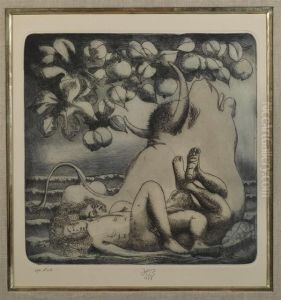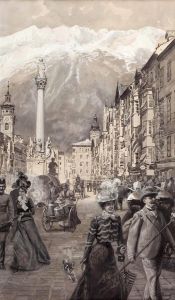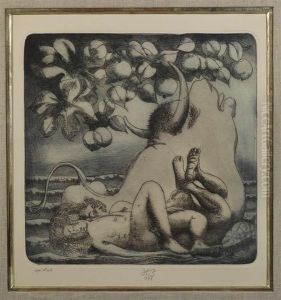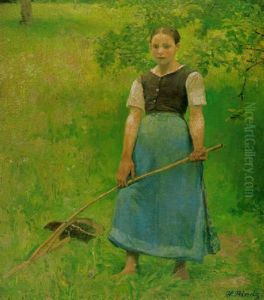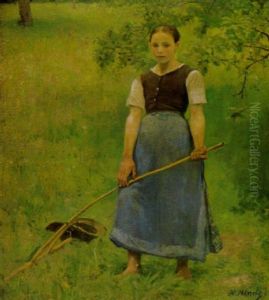Heinrich Binde Paintings
Heinrich Binde was a German landscape painter and etcher, born on September 9, 1862, in Leipzig. He is known for his contribution to the art world during the late 19th and early 20th centuries, a time when various art movements were emerging throughout Europe.
Binde was educated at the Academy of Fine Arts Leipzig where he studied under the tutelage of landscape painter and etcher, Ferdinand Pauwels, who was a significant influence on his early work. Binde's style was rooted in the naturalistic tradition, with a strong emphasis on detailed and realistic depictions of the German countryside. He was particularly adept at capturing the changing moods of landscapes through the use of light and shadow, which added a sense of depth and atmosphere to his works.
Throughout his career, Heinrich Binde remained focused on the natural environment, often portraying scenes of the Saxon countryside. His works were characterized by a delicate yet precise technique, which he applied not only to his paintings but also to his etchings, a medium he became increasingly known for. Binde's etchings were highly detailed and rendered with a technical proficiency that showcased his deep understanding of the process.
Despite his skill and the beauty of his landscapes, Binde never gained the same level of fame as some of his contemporaries. Nevertheless, his work was appreciated by art collectors and critics of his time for its craftsmanship and serene quality. He exhibited his work in various venues, including the Great Berlin Art Exhibition and other regional exhibitions.
Heinrich Binde's career was a reflection of a transitional period in art, where artists were beginning to explore new techniques and ideas, leading to the development of modern art movements. However, Binde remained true to his love for the traditional landscape, and as such, his work provides a valuable glimpse into the naturalistic tendencies of the period.
Binde passed away on April 3, 1932, in Leipzig. His legacy lives on through his landscapes and etchings, which continue to be appreciated by art historians and enthusiasts for their representation of the German landscape during a time of artistic evolution.
